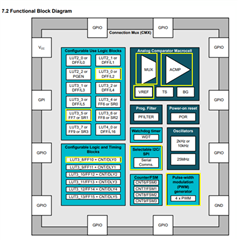Other Parts Discussed in Thread: TPLD1202
Tool/software:
Hi,
We are considering a solution that uses the TPLD1201 to sense the coil current and perform current feedback control.
The inputs to the TPLD1201 are the current command value (analog) and current feedback (analog).
The output of the TPLD1201 is planned to be an output (2 or 4 outputs) that controls the H-bridge with PWM, and we would also like to adjust the gain of the PI regulator.
Could you comment on the feasibility of this?
Thanks,
Conor


